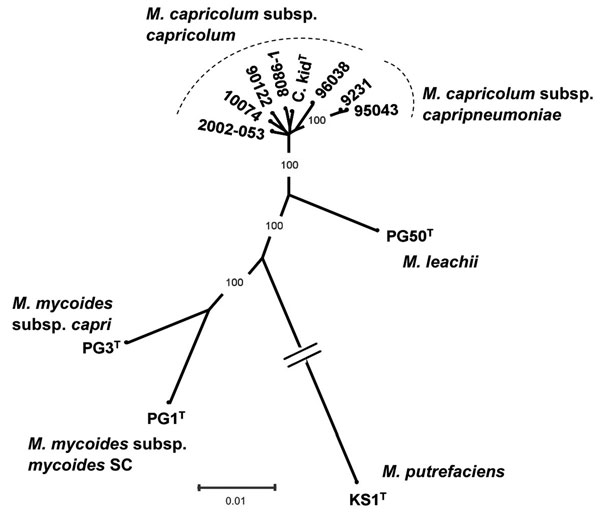Volume 17, Number 12—December 2011
Dispatch
Fatal Outbreak of Mycoplasma capricolum Pneumonia in Endangered Markhors
Figure 2

Figure 2. Phylogenetic tree of the Mycoplasma mycoides cluster, including the isolate from markhor (Capra falconeri) 10074 (1.4) in Tajikistan, 2010, together with available M. capricolum subsp. capricolum strains, as well as type strains corresponding to other species or subspecies from this cluster and M. putrefaciens, used as outgroup. The tree, derived from distance analysis of 5 concatenated protein-coding sequences (fusA, glpQ, gyrB, lepA, rpoB), was constructed by using the neighbor-joining algorithm. Bootstrap percentage values were calculated from 500 resamplings, and values >90% are indicated. Scale bar indicates distance equivalent to 1 substitution per 100 nt positions. Note that the branch corresponding to the outgroup has been shortened, as indicated by 2 parallel bars.